Summary: This article compares GIMP and Photoshop, examining their features (such as removing background and enhancing image), user interfaces, pros and cons, and more.
When it comes to editing images, having the right software is crucial for achieving the results you want. Whether you're retouching photos, creating designs, or experimenting with digital art, the right tool can make all the difference. Photoshop is undoubtedly a great choice, but its price tag might make some hesitate. This is where GIMP comes in, offering a free alternative with impressive features. But when it comes to GIMP vs Photoshop, which one is truly the better option?
In this article, we’ll take a deep dive into both programs, comparing their strengths and weaknesses to help you decide which one suits your needs best.
Background removal is a common but time-consuming task in photo editing. Some tools, like GIMP, don't support AI-based background removal, while Photoshop's automatic tool lacks the precision of dedicated AI background removers. To improve efficiency, an AI background remover can serve as a helpful assistant.
![]() The Best Solution: Use Aiarty Image Matting to Remove Backgrounds from Images in One Click
The Best Solution: Use Aiarty Image Matting to Remove Backgrounds from Images in One Click
Aiarty Image Matting uses AI-powered algorithms to precisely remove complex backgrounds in seconds, automatically handling fine details like hair and ensuring natural edge transitions. Aiarty also supports batch processing, allowing you to remove backgrounds from multiple images at once, saving you even more time.
Download Aiarty Image Matting to remove background with AI:
A Quick Look at GIMP and Photoshop
What Is GIMP
GIMP (GNU Image Manipulation Program) is a free, open-source image editing software that's been around for over two decades. It is available for Windows, macOS, and Linux.
While it doesn't come with the same polished user interface as Photoshop, it offers a wide array of features like advanced image manipulation, layer management, and support for numerous plugins. Its flexibility and open-source nature have made it popular among users who want a budget-friendly alternative to Adobe products without compromising on core functionality.

What Is Photoshop
Photoshop, developed by Adobe, is the industry-standard software for image editing, design, and photography. Available through a subscription-based model, Photoshop offers an extensive set of tools, from basic edits like cropping and color correction to more complex tasks like 3D modeling and video editing.
Its intuitive user interface, coupled with Adobe’s continuous updates and support, makes Photoshop the go-to choice for professionals across various industries. Whether you’re a photographer, graphic designer, or digital artist, Photoshop provides an unparalleled range of tools designed for both creative and technical tasks.

GIMP vs Photoshop: Feature Comparison
Basic Feature Comparison
Background removal
When it comes to cutting out objects from an image, Photoshop and GIMP both offer solutions, but they approach the task differently.
Photoshop provides tools like the Magic Wand, Quick Selection, and Object Selection Tool, which are great for selecting and separating objects from the background. Additionally, Photoshop includes an automatic Remove Background feature under Quick Actions, which makes it easy for users to remove backgrounds with just a click.
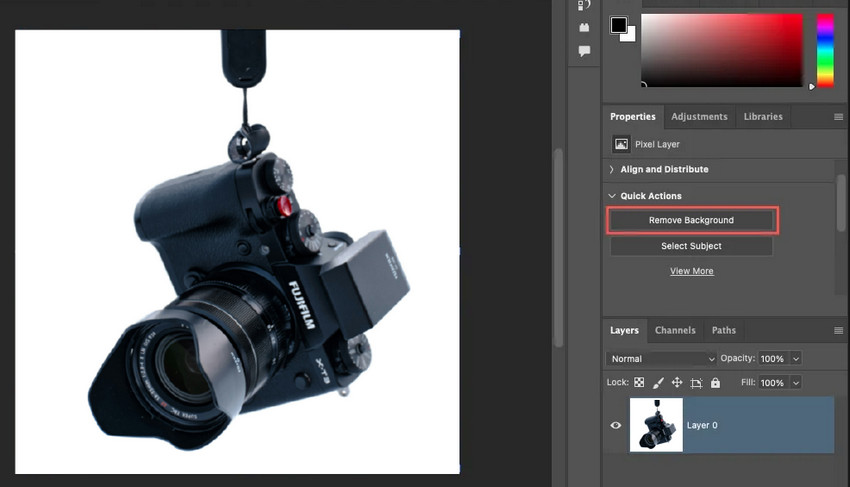
However, Photoshop’s background removal tool doesn’t match the precision of a dedicated AI background remover like Aiarty Image Matting. Below is a comparison of the background removal results using Photoshop’s automatic feature versus Aiarty Image Matting’s AI-powered tool, clearly showing that Photoshop’s automatic tool lacks the sharpness and accuracy provided by Aiarty.
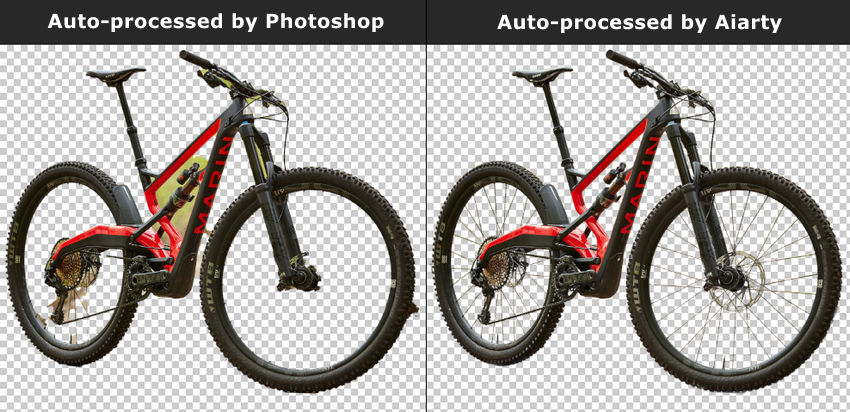
Photoshop also supports batch cutouts through Actions, where users can automate the background removal process across multiple images. This feature is useful but requires setting up an Action to handle batch processing.
On the other hand, GIMP does not have automatic background removal or batch processing built into the software. GIMP provides tools like the Quick Mask Tool and Paths Tool for manual selections, which can work well with practice. However, users looking for automatic or bulk cutout capabilities may find GIMP lacking compared to Photoshop or dedicated AI-powered background removers.
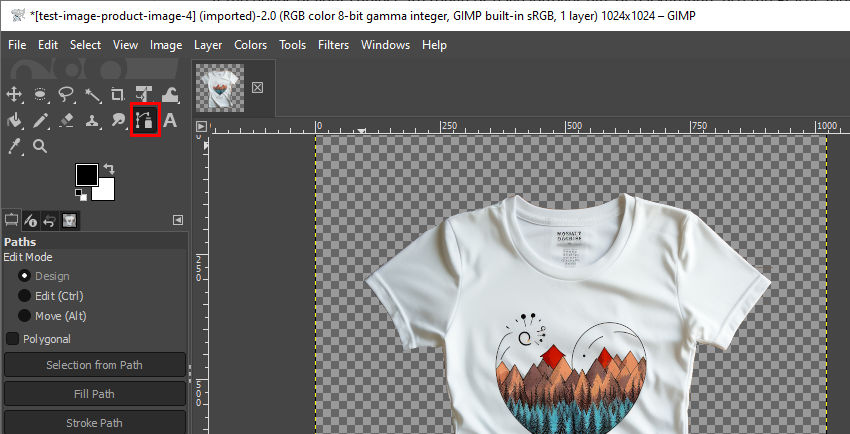
Image Enhancement
Photoshop is well-regarded for its powerful image enhancement tools, such as Smart Sharpen, Noise Reduction, and its Super Resolution feature. Adobe’s Super Resolution, available in Camera Raw and Photoshop, allows users to double the resolution of their images, effectively increasing both the width and height by two times. This results in a fourfold increase in pixel count, which is especially useful for large-format and high-DPI printing.
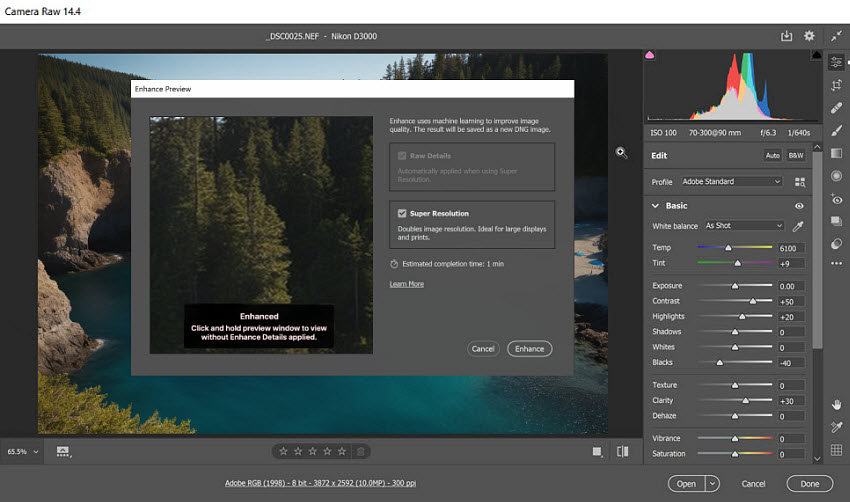
However, while Super Resolution is a great tool for enlarging images, it still has its limitations. One of these is that it can only upscale your image by 2x.
Additionally, achieving optimal results often requires additional steps, such as manual sharpening and noise reduction, to refine the upscaled image. This makes Photoshop’s image enhancement process more time-consuming compared to AI-driven tools that automatically optimize the image without needing manual intervention.
For those looking for even more powerful upscaling options, Aiarty Image Enhancer can upscale images up to 32K, offering a far superior level of detail retention and quality, eliminating noise, blur, and pixelated artifacts—features that Photoshop’s traditional methods cannot fully match.
GIMP, while it offers basic enhancement features such as Sharpening, Noise Reduction Plugins, and Curve Adjustments, requires more manual input to achieve the same results as Photoshop’s automated functions. GIMP’s open-source nature allows for some degree of customization through plugins, but it lacks the advanced AI tools that Photoshop provides for automatic image enhancement.
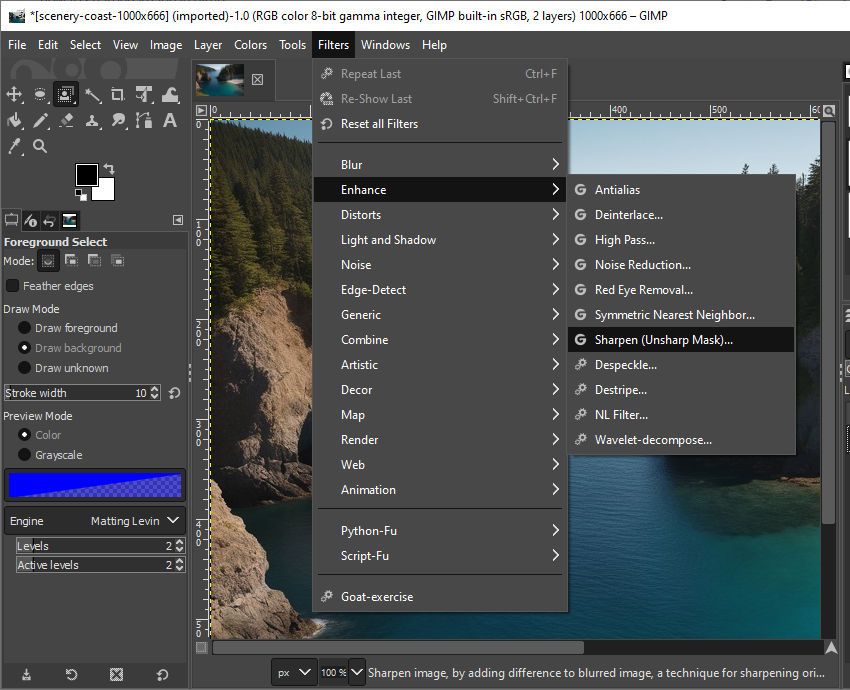
Basic Image Editing (Cropping, Brightness/Contrast Adjustments, Color Corrections, etc.)
Both GIMP and Photoshop excel at basic image editing tasks, such as cropping, adjusting brightness/contrast, and color correction. Photoshop’s interface is intuitive, with easy access to tools like Levels and Curves, allowing users to make precise edits to the image’s tone and color. Features like Smart Adjustments make it quick and simple to make changes without compromising quality.
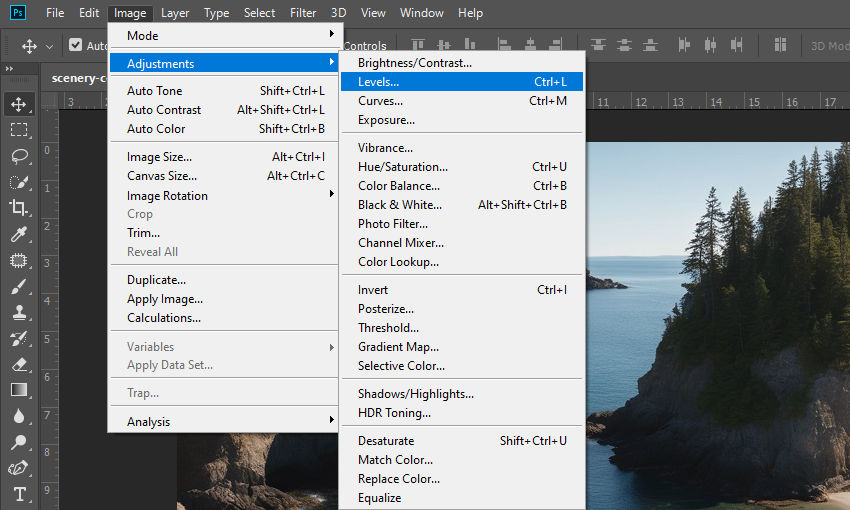
GIMP, though less polished, provides similar tools for Levels, Color Balance, and Curves, allowing users to manually adjust images. While it’s effective for most users, the process can feel more cumbersome compared to Photoshop, especially for those seeking fast, high-quality results.
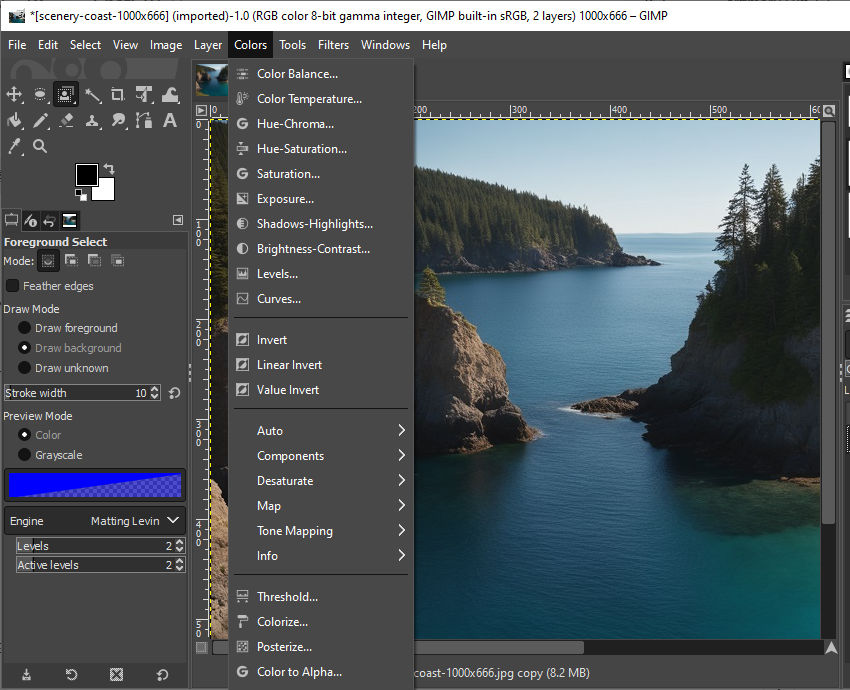
Layer and Mask Operations
Both GIMP and Photoshop have robust layer systems, allowing users to work non-destructively. Photoshop’s layer management is intuitive and includes advanced features like Smart Objects and Adjustment Layers, enabling flexible, revisable edits.
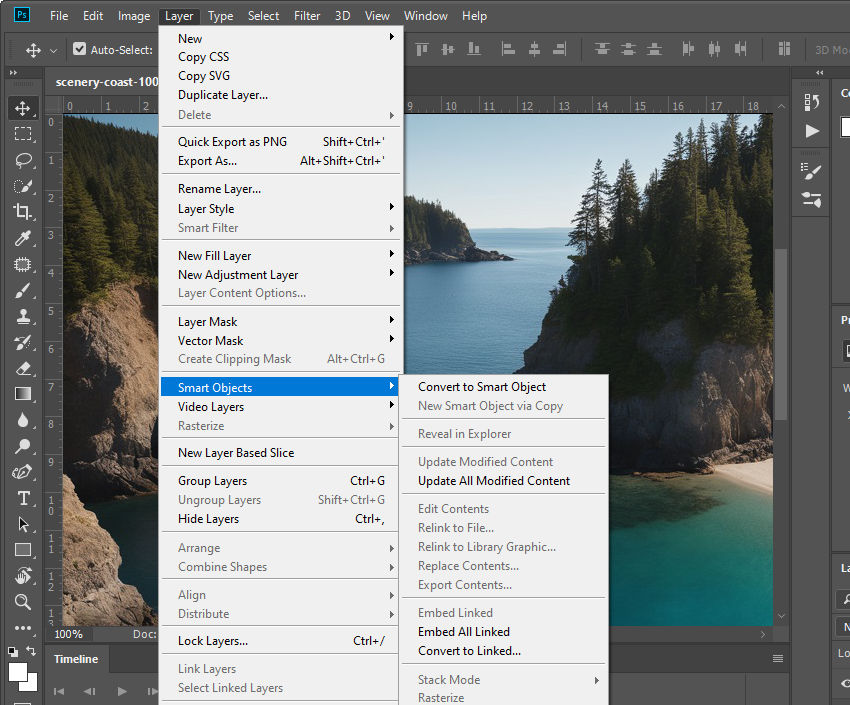
GIMP also supports layers and layer masks, offering flexibility for detailed editing, but lacks some of Photoshop’s advanced features. However, being open-source, GIMP can be extended with plugins to enhance its capabilities.

Brush Tools, Paths, and Shape Tools
For drawing, designing, and creating paths, both GIMP and Photoshop provide powerful tools. Photoshop’s Brush Tool is highly customizable, and its Pen Tool offers precise control for vector-based tasks. Photoshop also has an extensive library of pre-set brushes and shape tools, which are excellent for both artistic and graphic design work.
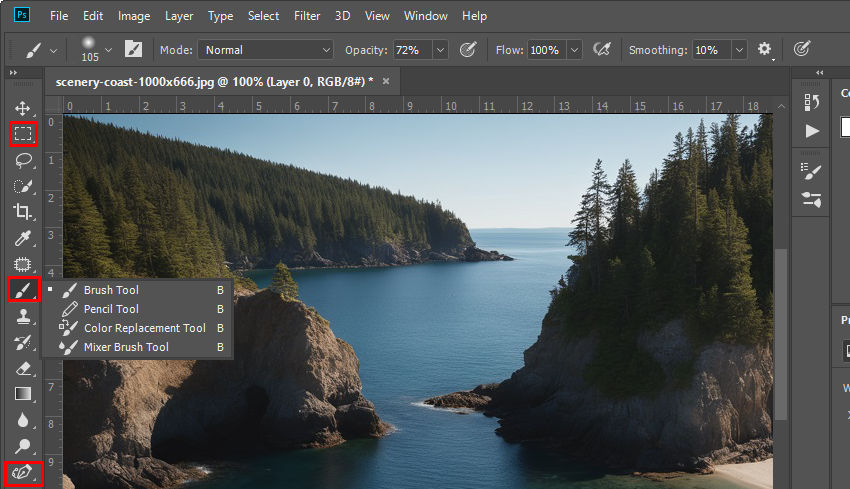
GIMP provides similar functionality with its Paintbrush Tool and Paths Tool, but its brush engine and path creation options are not as refined as Photoshop’s. GIMP’s customization options are robust, though, and many users take advantage of the open-source nature to create specialized brushes and tools.
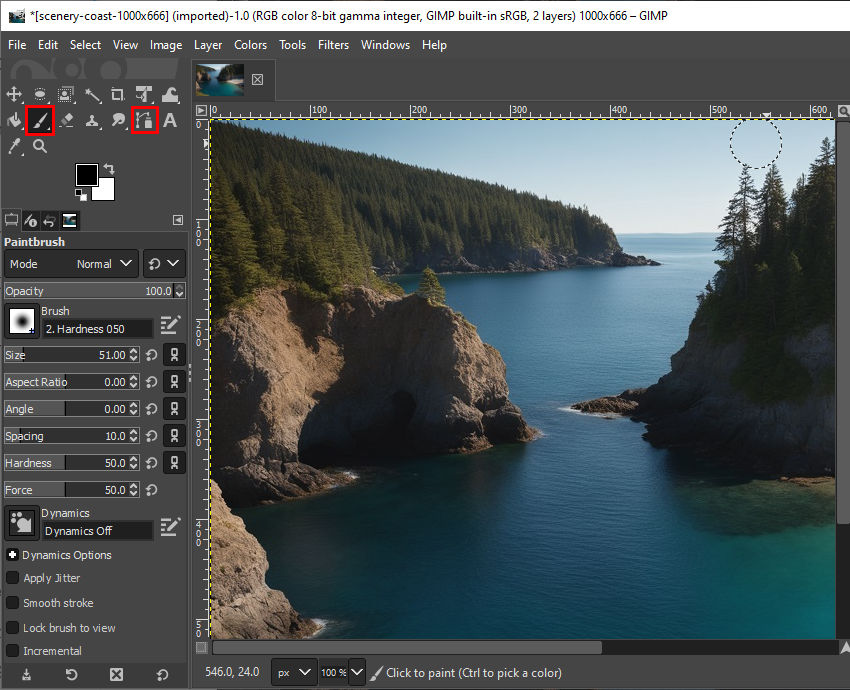
Advanced Feature Comparison
Plugin Support
When it comes to plugin support, Photoshop takes the lead with its vast ecosystem of plugins developed by Adobe and third-party developers. This extensive library allows users to enhance their editing capabilities with a range of specialized tools, from AI-powered enhancements to advanced filters and workflow optimizations.
Photoshop’s marketplace offers both free and premium plugins, making it a versatile tool for professionals who need specialized features.
On the other hand, GIMP also supports plugins, but these are largely community-driven and often lack the polish and reliability of Photoshop’s offerings. While GIMP’s open-source nature encourages a broad range of third-party developers to contribute, the quality and functionality of these plugins can vary widely. Some users may find GIMP’s plugin ecosystem sufficient, but it is generally not as robust or diverse as Photoshop’s.
3D Image Processing
In terms of 3D image processing, Photoshop is far more advanced. Photoshop includes comprehensive tools for 3D modeling, texture mapping, and 3D rendering, allowing users to create and manipulate 3D objects within their projects. This makes Photoshop the go-to choice for professionals working with 3D graphics, product designs, and complex visual effects that require detailed 3D processing.
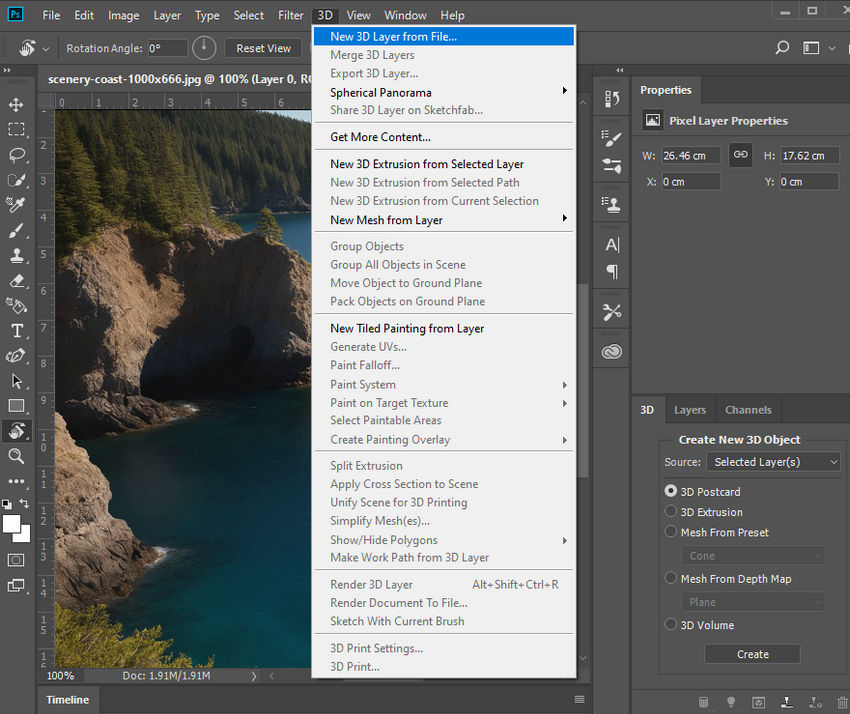
GIMP, in contrast, has limited 3D capabilities. While it supports some basic 3D object manipulation through plugins, it lacks the depth of 3D tools found in Photoshop. GIMP users who require extensive 3D processing will likely need to turn to other software, as GIMP’s features are far more suited to 2D image editing.
Image Repair and Advanced Selections
When it comes to image repair and advanced selection tools, Photoshop offers powerful, AI-enhanced features like Content-Aware Fill, Healing Brush, and Clone Stamp that automatically fill in missing or unwanted image elements while preserving the surrounding texture and lighting. These tools make it easy to fix imperfections, remove objects, or restore damaged areas in an image with minimal manual input.
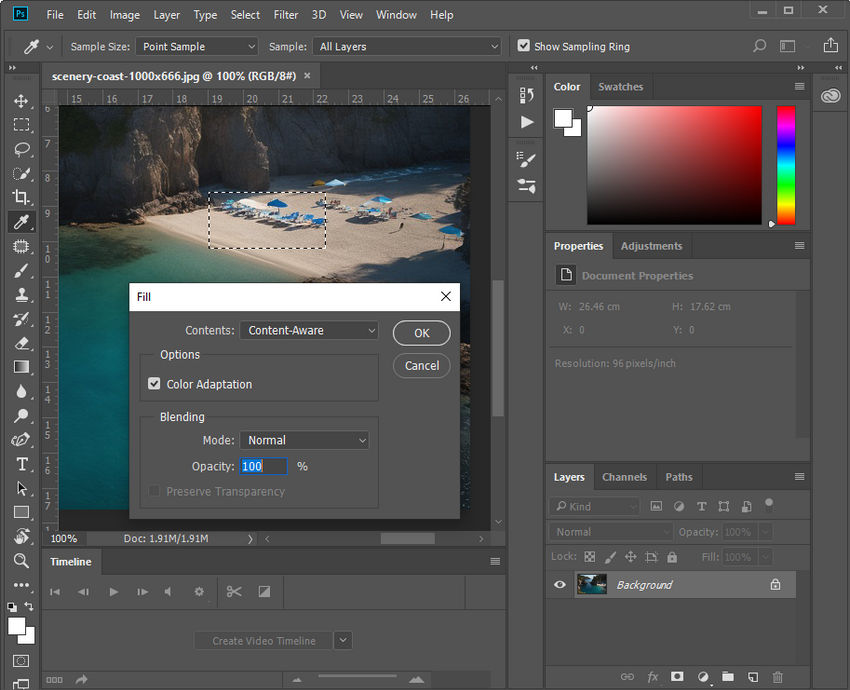
The advanced selection tools such as Select Subject, Quick Mask, and Refine Edge make precise selections easy, even in complex, detailed images.
GIMP, while it includes basic tools like the Healing Tool and Clone Tool, lacks the AI-driven automation and precision of Photoshop’s advanced repair functions. While GIMP can achieve similar results with manual effort, it does not have the same automatic fill capabilities as Photoshop’s Content-Aware Fill or the advanced selection tools for complex images.

Therefore, GIMP requires more time and attention to detail when performing tasks like image repair or advanced selections.
Batch Processing
In terms of batch processing, Photoshop shines with its Actions feature, which allows users to record and apply a series of tasks to multiple images in one go. Users can automate repetitive tasks such as resizing images, renaming, and applying effects across large batches of files. This feature is ideal for professionals working with large volumes of images and ensures a consistent workflow.
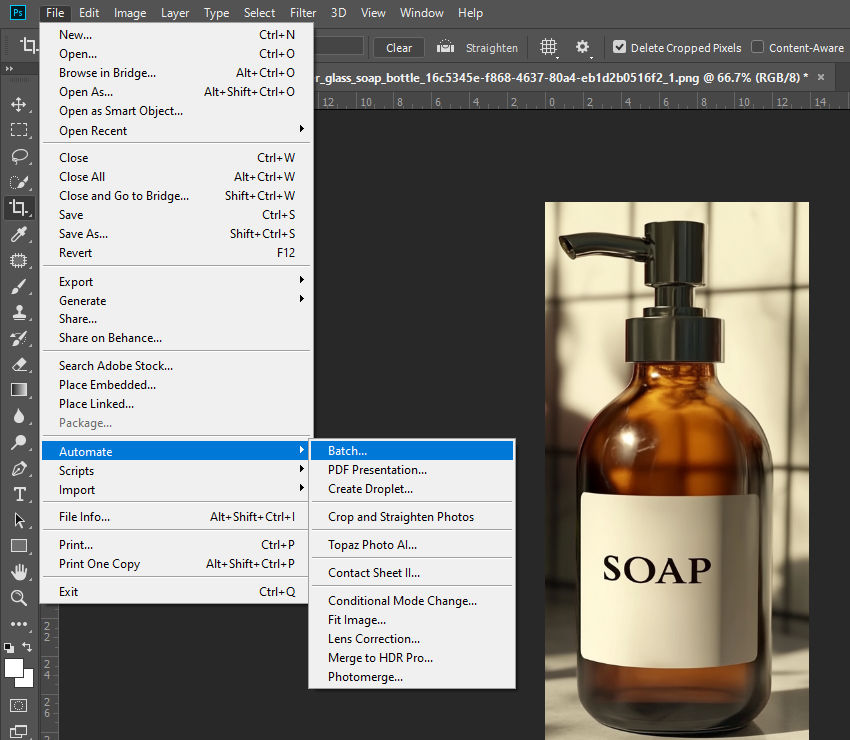
GIMP supports batch processing, but it is much less user-friendly. Users typically rely on external scripts or plugins to automate batch tasks, and setting this up can be time-consuming and technical. While it is possible to run batch operations in GIMP, the process is more complicated and less intuitive compared to Photoshop’s built-in features.
GIMP vs Photoshop: Interface and User Experience
Interface Design
One of the common criticisms of GIMP is that its interface, while customizable, can feel cluttered and unintuitive, especially for new users. The layout is not as polished as some of its more commercial counterparts, and finding specific tools can sometimes require more effort.
GIMP offers the flexibility to rearrange and adjust panels, which can be helpful for experienced users who want to tailor the workspace to their preferences. However, this flexibility often comes at the cost of an intuitive design, leading to a steeper learning curve for beginners.
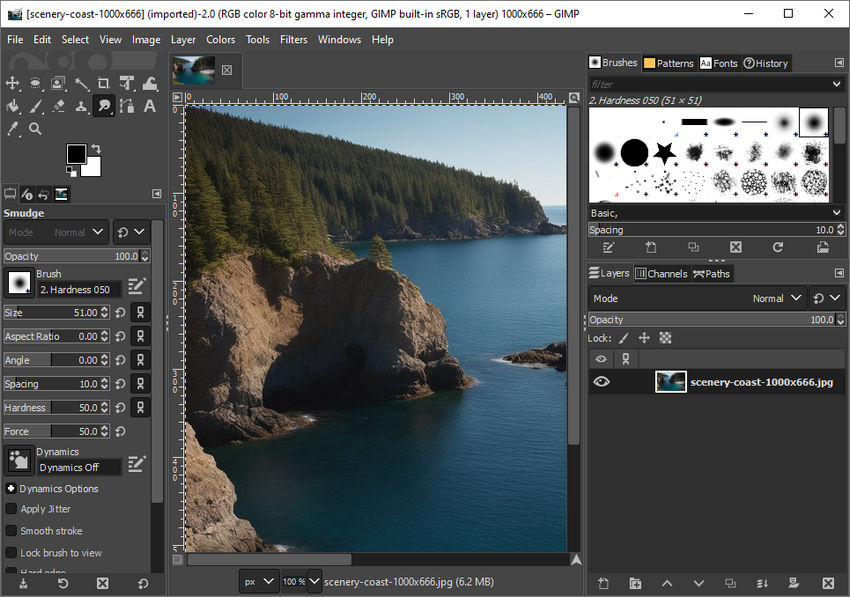
Photoshop, on the other hand, boasts a mature and widely accepted interface that has been refined over many years. It follows a standard design convention with clearly labeled panels, toolbars, and options. The interface is widely regarded as professional and highly functional, and it offers a streamlined user experience for those familiar with it.
Photoshop’s preset workspaces, which are optimized for specific tasks (like photo editing or graphic design), also help users focus on what they need, without feeling overwhelmed. Overall, Photoshop’s interface is designed to meet the demands of professionals who require quick access to a broad range of advanced tools.

Ease of Use: Adaptability for Beginners and Advanced Users
GIMP’s steep learning curve can be a barrier for beginners. While its basic features are relatively easy to learn, the overall user experience can feel unintuitive, particularly for those new to image editing. The lack of a consistent user interface design and the requirement to dive deep into customization options often make the tool less user-friendly for newcomers.
However, advanced users who are familiar with the intricacies of the software can greatly benefit from GIMP’s flexibility and the ability to adapt the workspace to suit their specific workflow.
Photoshop excels in terms of usability, with its design catering to both beginners and advanced users. While the software can seem overwhelming due to its vast array of tools, Photoshop offers a user-friendly introduction through tutorials, helpful prompts, and an intuitive tool layout.
Beginners can start with basic tasks and gradually work their way up, while advanced users will appreciate the depth and customization Photoshop offers. The software’s consistent interface design and extensive documentation make it easier for both new users and professionals to get comfortable and find the tools they need quickly.
GIMP vs Photoshop: Price and Licensing
GIMP: Completely Free and Open-Source
One of the most significant advantages of GIMP is that it is completely free and open-source. There are no upfront costs, subscription fees, or hidden charges—users can download and use the software without any financial commitment. This makes GIMP an attractive choice for hobbyists, students, and those who simply cannot justify paying for premium software.
Since GIMP is open-source, users also have the ability to modify and contribute to the code, making it a highly customizable solution. This level of openness attracts a broad range of users who appreciate the transparency and flexibility that GIMP offers.
Photoshop: Subscription-Based Pricing
Photoshop, on the other hand, follows a subscription-based pricing model. Adobe offers several plans, including a Photography Plan, which includes Photoshop and Lightroom, and the All Apps Plan, which provides access to the entire Adobe Creative Cloud suite. The monthly or annual subscription fees can add up over time, with costs generally ranging from $22.99 per month for Photoshop alone to $59.99 per month for the full suite.
While Photoshop’s subscription model ensures that users always have access to the latest features and updates, it can be expensive, especially for those who are just starting out or working with a limited budget. For businesses, the cost might be justifiable due to the tool's professional-grade capabilities, but for individual users, this ongoing cost could be a significant barrier.
GIMP vs Photoshop: Target Audience
GIMP: Ideal for Personal Users, Small Studios, and Non-Professionals
Given that GIMP is free and open-source, it is best suited for individual users, small studios, and non-professionals—particularly those who are working with tight budgets.
For personal projects or hobbyist use, GIMP provides a powerful, cost-free alternative to expensive commercial software. Small businesses or freelancers with limited financial resources can also benefit from GIMP’s rich features without having to worry about subscription costs.
However, due to its steeper learning curve and lack of advanced professional features, it may not be the best choice for high-end commercial projects, particularly in fields like advertising, branding, or high-level photography.
Photoshop: Tailored for Professionals
Photoshop, conversely, is designed for professional designers, photographers, advertising agencies, and medium to large studios. Its extensive range of tools and advanced features make it a go-to solution for professionals who need high-quality, reliable results. Whether it’s for graphic design, photo manipulation, web design, or video editing, Photoshop is a versatile platform that caters to a wide array of creative industries.
For professional work, Photoshop’s integrated workflow, advanced AI tools, and seamless integration with other Adobe apps make it indispensable. The ongoing subscription costs are generally justifiable for those who rely on the software for their livelihood and need the advanced functionality that GIMP may lack.
GIMP vs Photoshop: Community Support and Learning Resources
GIMP: Strong Open-Source Community and Resources
The GIMP community is active and vibrant, with various forums where users can share tips, discuss issues, and collaborate on projects. Notable forums include:
- Pixls.us: A community focused on Free/Open Source Photography, where GIMP users can connect with others interested in photography and open-source tools.
- GNOME Project Forum: Hosted by the GNOME Foundation, this forum supports users of GNOME, which is the free software desktop environment. As GIMP is part of the GNOME ecosystem, this forum is a good place to find resources and help.
- Reddit: There are several active subreddits related to GIMP, where users post questions, tutorials, and showcase their work. Popular subreddits like r/GIMP are great places for community engagement.
Photoshop: Robust Adobe Support and Extensive Learning Resources
Photoshop, with its long-standing position in the market, comes with extensive official support from Adobe, including dedicated help channels, tutorials, and customer service. Adobe offers Adobe Learn and Adobe Max—platforms that provide free and paid learning resources, workshops, and webinars to help users at all levels.
Additionally, third-party websites and platforms like Udemy, Lynda.com, and YouTube offer in-depth, professional courses for mastering Photoshop. Adobe’s vast ecosystem of resources ensures that users can easily find the help they need, whether they’re beginners or professionals seeking advanced techniques.
A Quick Rundown of GIMP and Photoshop’s Pros and Cons
Choosing Between GIMP and Photoshop: Which is Better?
If you're asking "Is GIMP better than Photoshop?", the answer largely depends on your priorities.
GIMP is an excellent choice for budget-conscious users or those who need a customizable tool for personal or small-business use. While it may take more time to learn, it provides a robust set of features for a zero-cost option. However, when comparing GIMP vs Photoshop for professional use, GIMP falls short in offering advanced features and AI-powered tools that Photoshop provides.
If you're wondering which is better for professional environments—Photoshop or GIMP—Photoshop is clearly the superior choice. It offers a comprehensive set of professional-grade tools, AI enhancements, and seamless integration with other Adobe apps, making it ideal for designers, photographers, and businesses that require advanced capabilities and efficiency.
That being said, while both GIMP and Photoshop are excellent image editing software, they may not always be the best choice for users who only need specific functionalities.
For example, if your primary goal is background removal or image enhancement, both GIMP and Photoshop might be overkill. Photoshop requires creating actions for batch editing, and GIMP lacks automated AI tools, making them less efficient for quick, specialized tasks like background removal or upscaling. For users seeking simplicity and speed in these areas, a dedicated AI-powered tool like Aiarty Image Matting or Aiarty Image Enhancer might offer a much more effective solution. These specialized tools provide automatic, high-quality results without the complexity of a full-fledged image editing software.
Ultimately, the best choice depends on your needs and budget—GIMP is great for cost-effective, general image editing, while Photoshop excels in professional environments. If you're looking for specific functionalities like background removal or image enhancement, you might want to explore other options that focus on those features alone.